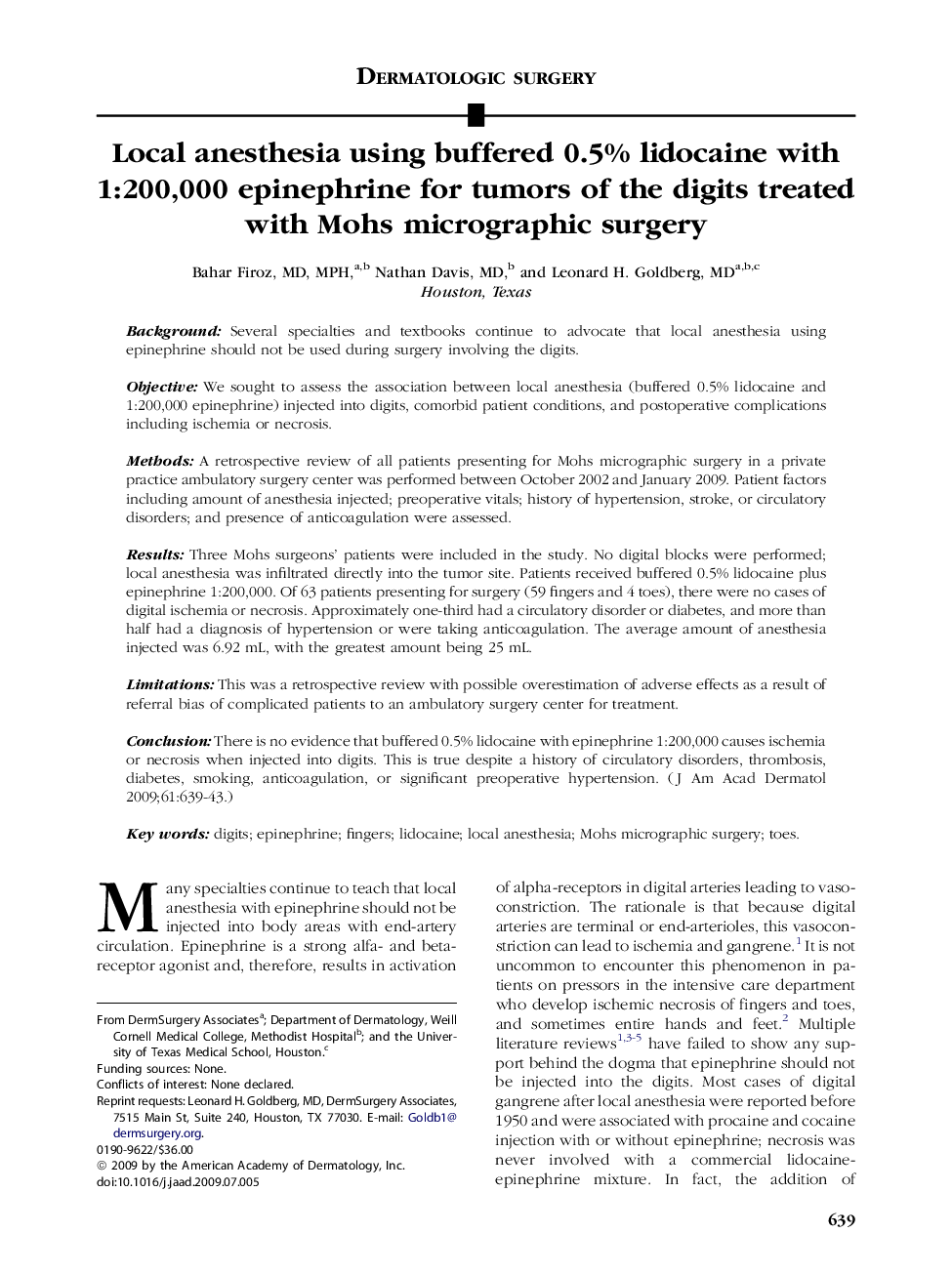| Article ID | Journal | Published Year | Pages | File Type |
|---|---|---|---|---|
| 3209115 | Journal of the American Academy of Dermatology | 2009 | 5 Pages |
BackgroundSeveral specialties and textbooks continue to advocate that local anesthesia using epinephrine should not be used during surgery involving the digits.ObjectiveWe sought to assess the association between local anesthesia (buffered 0.5% lidocaine and 1:200,000 epinephrine) injected into digits, comorbid patient conditions, and postoperative complications including ischemia or necrosis.MethodsA retrospective review of all patients presenting for Mohs micrographic surgery in a private practice ambulatory surgery center was performed between October 2002 and January 2009. Patient factors including amount of anesthesia injected; preoperative vitals; history of hypertension, stroke, or circulatory disorders; and presence of anticoagulation were assessed.ResultsThree Mohs surgeons' patients were included in the study. No digital blocks were performed; local anesthesia was infiltrated directly into the tumor site. Patients received buffered 0.5% lidocaine plus epinephrine 1:200,000. Of 63 patients presenting for surgery (59 fingers and 4 toes), there were no cases of digital ischemia or necrosis. Approximately one-third had a circulatory disorder or diabetes, and more than half had a diagnosis of hypertension or were taking anticoagulation. The average amount of anesthesia injected was 6.92 mL, with the greatest amount being 25 mL.LimitationsThis was a retrospective review with possible overestimation of adverse effects as a result of referral bias of complicated patients to an ambulatory surgery center for treatment.ConclusionThere is no evidence that buffered 0.5% lidocaine with epinephrine 1:200,000 causes ischemia or necrosis when injected into digits. This is true despite a history of circulatory disorders, thrombosis, diabetes, smoking, anticoagulation, or significant preoperative hypertension.
